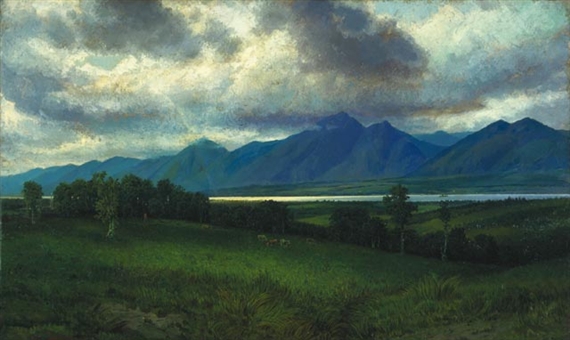"There is at the bottom of each artistic conscience a love for the land of their birth."
(Homer Watson)

Dawn in the Laurentides courtesy https://en.wikipedia.org/wiki/Homer_Watson.
Homer Watson was given a set of paints by his aunt and decided to become a painter. Decades later, Oscar Wilde nicknamed Watson the "Canadian Constable", comparing him to the great English landscape artist.
Homer Watson was born in Doon, Ontario (now Kitchener) in 1855. He showed an interest in art from an early age. Later moving to Toronto, he copied works from the Toronto Normal School, but was mainly self-taught. In 1876, Watson moved to New York where he was influenced by the Hudson River School. He painted along the banks of the Hudson and Susquehanna Rivers. In 1880, he painted The Old Mill and sold it to the Marquis of Lorne for Queen Victoria's art collection.
The same year Watson married and bought a house in Doon, near the banks of the Grand, which he featured in his newest paintings. In 1887, he moved to England for four years where he painted his most famous piece The Flood Gate. Watson maintained: "There is at the bottom of each artistic conscience a love for the land of their birth." In his later years, Watson campaigned for the preservation of the Waterloo woodlands which he had so lovingly painted. The Stock Market Crash of 1929 forced him to sell many of his paintings.
In 2005, Canada Post honoured Homer Watson by issuing two stamps, Dawn in the Laurentides and The Flood Gate. Today, Watson's Doon home has been transformed into a museum, filled with his paintings.

The Flood Gate courtesy http://www.thecanadianencyclopedia.ca/en/article/homer-ransford-watson/.
No comments:
Post a Comment